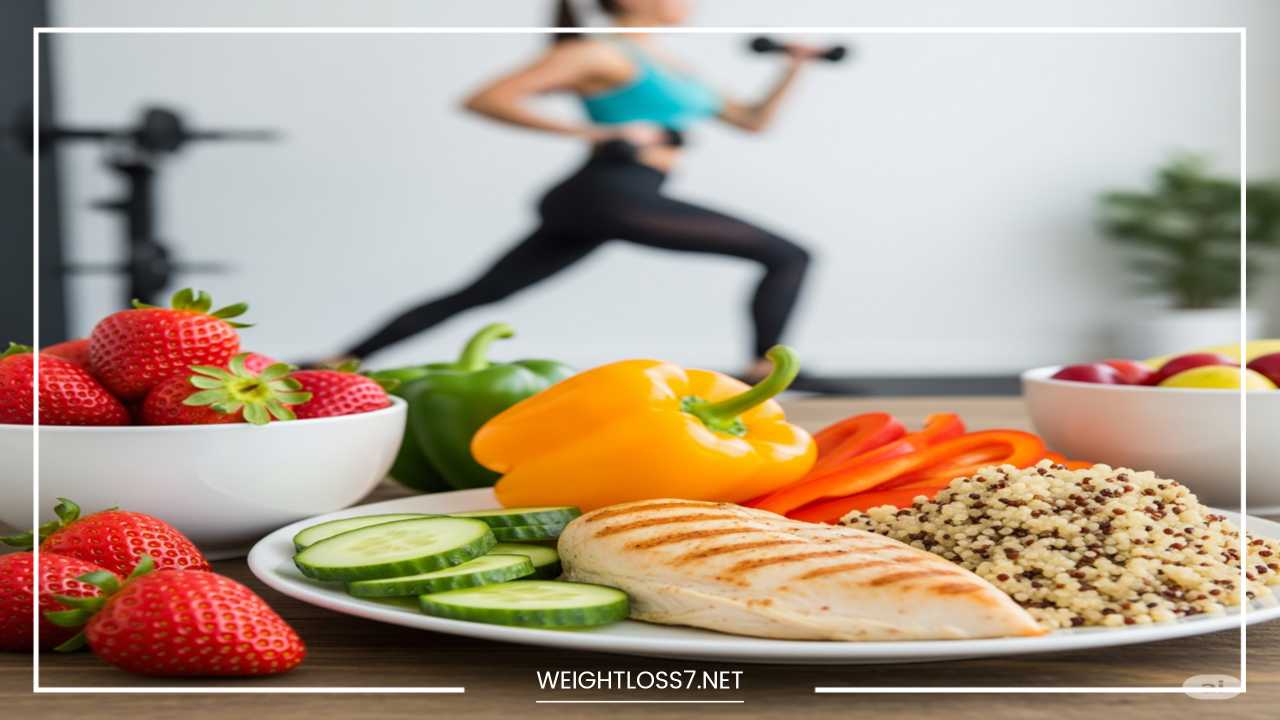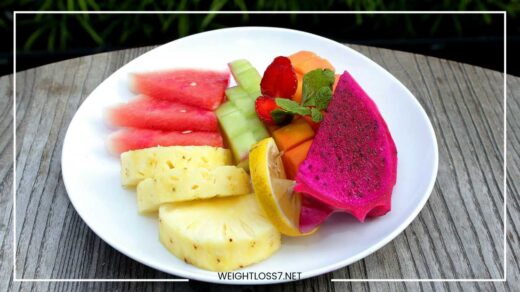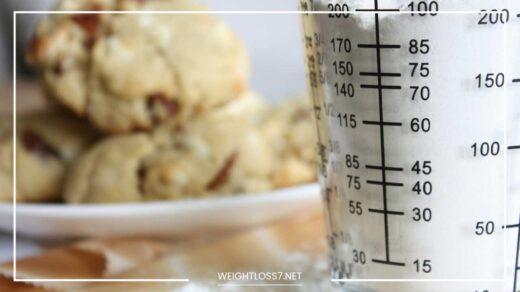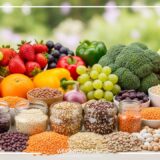Free Weight Loss Tips & Plans | Start Losing Weight Today
Start Your Free Weight Loss Journey Today | Easy & Natural
Embarking on a weight loss journey can feel like a monumental task, but with the right guidance, it’s an achievable and deeply rewarding endeavor. This comprehensive guide will equip you with practical, sustainable strategies to kickstart your weight loss, improve your overall health, and foster a more vibrant you. Forget quick fixes and restrictive diets; our focus is on building habits that last a lifetime.
The Foundation of Sustainable Weight Loss: Understanding Your Body
Before diving into specific tips and plans, it’s crucial to understand the fundamental principles of weight management. At its core, weight loss boils down to a caloric deficit: consuming fewer calories than your body expends. However, the quality of those calories and the consistency of your habits play an equally vital role.
Your body is a complex system, and its energy needs vary based on age, gender, activity level, and metabolism. While a general guideline exists, individual needs differ significantly. The goal isn’t starvation, but rather mindful consumption and increased activity to encourage your body to tap into its stored energy (fat).
Pillar 1: Nourishment – Fueling Your Body Wisely
Food is not the enemy; it’s your body’s fuel. The key is to choose the right kind of fuel and in appropriate quantities.
1. Embrace Whole, Unprocessed Foods
This is arguably the most impactful dietary change you can make. Whole foods are those that are as close to their natural state as possible. They are rich in essential nutrients, fiber, and water, which are crucial for satiety and overall health.
- Fruits and Vegetables: Make them the stars of your plate. They are low in calories, high in fiber, and packed with vitamins, minerals, and antioxidants. Aim for a wide variety of colors to ensure a broad spectrum of nutrients. Think berries, apples, oranges, leafy greens, broccoli, carrots, bell peppers, and squash.
- Lean Protein Sources: Protein is vital for muscle repair and growth, and it also promotes satiety, helping you feel fuller for longer. Include sources like poultry (skinless breast and thighs), fish (salmon, cod, tuna, mackerel), lentils, chickpeas, beans, tofu, and other plant-based protein alternatives.
- Whole Grains: Opt for whole grains over refined grains. Whole grains retain their bran and germ, providing more fiber and nutrients. Examples include oats, quinoa, brown rice, whole wheat bread, and whole wheat pasta.
- Healthy Fats: Don’t shy away from healthy fats. They are essential for hormone production, nutrient absorption, and provide sustained energy. Sources include avocados, nuts (almonds, walnuts, cashews), seeds (chia, flax, sunflower), and olive oil.
2. Portion Control: The Art of Mindful Eating
Even healthy foods can contribute to weight gain if consumed in excessive quantities. Portion control isn’t about deprivation; it’s about awareness.
- Use Smaller Plates: This simple trick can psychologically make your meal look more substantial.
- Measure and Weigh: Initially, it can be helpful to measure out portions of grains, nuts, and oils to get a visual understanding of appropriate serving sizes.
- Listen to Your Body: Pay attention to hunger and fullness cues. Eat slowly, savor your food, and stop when you feel satisfied, not stuffed. It takes about 20 minutes for your brain to register fullness.
- Be Mindful of “Healthy” Calorie Bombs: While nuts, avocados, and olive oil are healthy, they are calorie-dense. Enjoy them in moderation.
3. Hydration: Water is Your Weight Loss Ally
Often overlooked, adequate water intake is fundamental for weight loss and overall health.
- Boosts Metabolism: Water plays a role in many metabolic processes.
- Promotes Satiety: Drinking a glass of water before meals can help you feel fuller and potentially eat less.
- Reduces Cravings: Sometimes, thirst can be mistaken for hunger. Drink water first, then assess if you’re truly hungry.
- Aids Digestion: Water helps move food through your digestive system.
Aim for at least 8-10 glasses of water per day, and more if you’re active or in a hot climate. Keep a water bottle handy as a visual reminder.
4. Smart Snacking: Bridging the Gaps
Snacking can be beneficial if done strategically. It can prevent overeating at main meals and keep your energy levels stable.
- Choose Nutrient-Dense Snacks: Opt for snacks that provide protein, fiber, or healthy fats. Examples include a handful of almonds, a piece of fruit with a small spoonful of nut butter, Greek yogurt (plain), vegetable sticks with hummus, or a small portion of cottage cheese with berries.
- Avoid Processed Snacks: Chips, cookies, and candy offer little nutritional value and are often high in unhealthy fats, refined sugars, and sodium.
5. Limit Sugary Drinks and Processed Foods
These are often empty calories that contribute to weight gain without providing any nutritional benefits.
- Sugary Drinks: Sodas, fruit juices (even 100% fruit juice can be high in sugar), and sweetened teas contribute significantly to caloric intake without promoting satiety. Opt for water, unsweetened tea, or sparkling water with a slice of lemon or lime.
- Processed Foods: These are typically high in unhealthy fats, refined sugars, sodium, and artificial ingredients. They are designed to be hyper-palatable, making it easy to overeat. Focus on cooking meals at home from whole ingredients as much as possible.
Pillar 2: Movement – Activating Your Body
While nutrition is paramount, physical activity complements your efforts by burning calories, building muscle, boosting metabolism, and improving overall well-being.
1. Find Activities You Enjoy
Exercise shouldn’t feel like a punishment. The key to consistency is finding activities that you genuinely enjoy.
- Walking: A fantastic low-impact option. Start with short walks and gradually increase your duration and intensity.
- Dancing: A fun way to get your heart rate up.
- Cycling: Great for cardiovascular health.
- Swimming: A full-body workout that’s easy on the joints.
- Hiking: Connect with nature while getting a good workout.
- Team Sports: If you enjoy camaraderie, consider joining a local team.
2. Incorporate Both Cardio and Strength Training
A well-rounded fitness routine includes both types of exercise.
- Cardiovascular Exercise (Cardio): This elevates your heart rate and burns calories. Aim for at least 150 minutes of moderate-intensity cardio per week (e.g., brisk walking, jogging, cycling) or 75 minutes of vigorous-intensity cardio (e.g., running, swimming laps).
- Strength Training: Building muscle is crucial for weight loss and overall health. Muscle tissue burns more calories at rest than fat tissue, meaning you’ll burn more calories even when you’re not exercising. You don’t need a gym; bodyweight exercises (squats, lunges, push-ups, planks) are highly effective. Aim for 2-3 strength training sessions per week.
3. Increase Non-Exercise Activity Thermogenesis (NEAT)
NEAT refers to the energy expended for everything we do that is not sleeping, eating,1 or sports-like exercise. These small movements add up!
- Take the Stairs: Skip the elevator or escalator.
- Park Further Away: Get in a few extra steps.
- Walk During Phone Calls: Pacing while on the phone adds movement.
- Stand More Often: If you have a desk job, consider a standing desk or take frequent standing breaks.
- Do Chores Vigorously: Cleaning, gardening, and other household tasks can be a good workout.
4. Consistency Over Intensity (Initially)
It’s better to do a little bit of activity consistently than to attempt an intense workout once a week and then burn out. Start small, build momentum, and gradually increase your duration and intensity as your fitness improves.
Pillar 3: Mindset and Lifestyle – The Inner Game of Weight Loss
Weight loss isn’t just about what you eat and how much you move; your mental and emotional state play a significant role.
1. Set Realistic Goals
Unrealistic goals can lead to frustration and burnout. Aim for a healthy and sustainable weight loss of 1-2 pounds per week. This gradual approach is more likely to result in lasting change. Celebrate small victories along the way.
2. Prioritize Sleep
Lack of sleep can wreak havoc on your weight loss efforts. It disrupts hormones that regulate appetite (ghrelin and leptin), leading to increased hunger and cravings, especially for unhealthy foods. Aim for 7-9 hours of quality sleep per night.
3. Manage Stress
Chronic stress can also contribute to weight gain. When stressed, your body releases cortisol, a hormone that can promote fat storage, particularly around the abdomen. Find healthy ways to manage stress:
- Meditation and Mindfulness: Even 5-10 minutes a day can make a difference.
- Yoga: Combines physical activity with stress reduction.
- Deep Breathing Exercises: Calms the nervous system.
- Hobbies: Engage in activities you enjoy to unwind.
- Spend Time in Nature: Proven to reduce stress.
4. Practice Mindful Eating
Beyond portion control, mindful eating involves paying attention to your food – its taste, texture, smell, and how it makes you feel.
- Eat Slowly: Savor each bite.
- Eliminate Distractions: Put away your phone, turn off the TV.
- Notice Hunger and Fullness Cues: Are you truly hungry, or are you eating out of boredom, stress, or habit?
5. Build a Support System
You don’t have to go it alone. Share your goals with trusted friends or family members who can offer encouragement and accountability. Consider joining2 a support group or working with a coach.
6. Track Your Progress (But Don’t Obsess)
Monitoring your food intake and activity levels can provide valuable insights and help you stay on track.
- Food Journal: Write down everything you eat and drink. This raises awareness of your eating habits.
- Fitness Tracker: Monitors steps, activity, and sleep.
- Regular Weigh-ins: Weigh yourself once a week at the same time, under the same conditions, to track trends. Don’t get discouraged by daily fluctuations; focus on the long-term trend.
- Measurements: Take body measurements (waist, hips, arms) to track progress that the scale might not show, especially if you’re building muscle.
Crafting Your Personalized Plan
There’s no one-size-fits-all approach to weight loss. The most effective plan is one that you can sustain long-term.
Step 1: Assess Your Current Habits
Before making changes, understand where you are now. For a few days, honestly track everything you eat, drink, and your activity levels. Identify areas where you can make improvements.
Step 2: Set SMART Goals
- Specific: Instead of “lose weight,” try “lose 10 pounds in 8 weeks.”
- Measurable: “Walk 30 minutes, 5 days a week.”
- Achievable: Is this goal realistic for you?
- Relevant: Is this goal important to you and aligned with your overall health?
- Time-bound: Set a deadline.
Step 3: Make Gradual Changes
Don’t try to overhaul everything at once. Small, consistent changes are more likely to stick.
- Week 1: Focus on drinking more water and adding one serving of vegetables to each meal.
- Week 2: Start walking for 15 minutes a day.
- Week 3: Swap sugary drinks for water or unsweetened tea.
- Week 4: Incorporate 1-2 strength training sessions using bodyweight exercises.
Step 4: Plan Your Meals
Meal planning can significantly reduce stress and improve your dietary choices.
- Choose a day to plan: Sunday is often a good day to map out your meals for the week.
- Create a grocery list: Stick to your list to avoid impulse buys.
- Batch cook: Prepare larger quantities of healthy staples like quinoa, brown rice, roasted vegetables, or lean protein sources to have on hand for quick meals throughout the week.
Step 5: Prepare for Challenges
Life happens, and there will be times when you face temptations or setbacks.
- Social Gatherings: Offer to bring a healthy dish, eat mindfully, and limit alcohol.
- Stress Eating: Identify your triggers and develop alternative coping mechanisms (e.g., go for a walk, call a friend, read a book).
- Plateaus: Weight loss isn’t always linear. If you hit a plateau, reassess your intake and activity, and consider making small adjustments.
Step 6: Celebrate Non-Scale Victories
Weight loss is more than just a number on the scale. Celebrate:
- Increased energy levels
- Clothes fitting better
- Improved sleep
- Better mood
- Increased strength and stamina
- Reduced reliance on processed foods
- Improved skin or hair
A Sample Day of Healthy Eating
This is just an example; adjust based on your preferences and caloric needs.
- Morning Hydration: 1-2 glasses of water immediately upon waking.
- Breakfast: Oatmeal made with water or unsweetened plant-based beverage, topped with berries and a sprinkle of chia seeds.
- Mid-Morning Snack (if hungry): A piece of fruit (e.g., apple) with a small handful of nut butter.
- Lunch: Large salad with mixed greens, colorful vegetables (bell peppers, cucumber, carrots), grilled chicken breast or chickpeas, and a light vinaigrette dressing (made with olive oil and vinegar).
- Afternoon Snack (if hungry): Vegetable sticks (carrots, celery) with a small portion of hummus.
- Dinner: Baked salmon or lentil stew with a generous serving of steamed broccoli and a small portion of quinoa or brown rice.
- Evening (if hungry and before bed): Herbal tea or a small bowl of plain Greek yogurt with a few berries.
The Journey to a Healthier You
Remember, weight loss is a journey, not a destination. There will be ups and downs, but consistency, patience, and self-compassion are your greatest allies. Focus on progress, not perfection. By adopting these sustainable strategies, you’re not just losing weight; you’re gaining a healthier, happier, and more energetic life. Start today, and empower yourself to build the vibrant future you deserve.


















